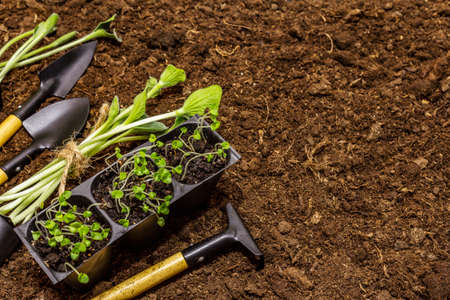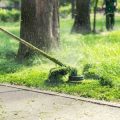Introduction to Secateurs and Their Role in UK Gardening
If you’ve ever wandered through a British garden, you’ll have seen the unmistakable handiwork of secateurs. These trusty pruning tools are a staple for gardeners across the UK, from seasoned horticulturists tending country estates to families nurturing their first rose bush in a city allotment. Secateurs—sometimes called pruning shears or hand pruners—are designed for snipping away stems, shaping shrubs, and maintaining healthy growth. But beyond their practical use, they connect generations: children watching parents and grandparents carefully trim a beloved apple tree, learning both patience and respect for nature.
In the unique climate of the UK, where rain and mild temperatures encourage lush growth, keeping plants in check is essential. Sharp secateurs make precise cuts that help plants heal quickly, reducing the risk of disease. For gardeners, using well-maintained tools means less strain on hands and wrists—a real blessing when tackling an unruly hedge or delicate climber. In essence, a sharp pair of secateurs is more than just a tool; it’s a partner in nurturing your garden and sharing its wonders with your family.
Signs Its Time to Sharpen Your Secateurs
If you want your roses to bloom brilliantly and your hedges to stay neat, recognising when your secateurs need sharpening is essential. As every UK gardener knows, a sharp pair of secateurs makes pruning effortless and keeps plants healthier. But how do you tell when yours are ready for a tune-up?
Common Signs Your Secateurs Are Dull
Just like we notice when our kitchen knives struggle with a juicy tomato, secateurs give subtle signals too. Here’s how to spot the signs:
| Sign | What You’ll Notice in the Garden |
|---|---|
| Jagged Cuts | Stems of roses, lavender, or hydrangea look torn or crushed instead of cleanly sliced. |
| Increased Effort | You need to squeeze harder, especially on woody stems like fuchsia or dogwood. |
| Plant Damage | Branches show bruising or fraying, leading to slower healing and possible disease entry. |
| Sap Build-Up | Sticky residue from willow or honeysuckle builds up faster as dull blades mash rather than cut. |
| Uneven Pruning | Your box hedge or topiary has ragged edges instead of crisp lines after trimming. |
Practical Tips for UK Gardens
In British gardens, we often tackle a mix of herbaceous perennials, shrubs, and climbers. Here are some everyday tasks where sharp secateurs make all the difference:
- Rose Pruning: If fresh cuts start to look ragged or brown quickly, it’s time for sharpening.
- Deadheading Daffodils: If the stems squish before they snap, blades are dull.
- Tidying Herbs: When harvesting rosemary or thyme feels more like tearing than snipping, a sharpen is overdue.
- Clematis Training: Struggling with thin but tough vines? Sharp blades should glide through with ease.
Listen and Feel: The Subtle Clues
A keen gardener develops an instinct—listen for the satisfying ‘snip’ and notice if there’s resistance. If pruning becomes a chore rather than a joy, treat your trusty secateurs to some TLC. After all, just as we encourage children to care for their favourite toys, caring for our tools helps our garden thrive in return.
![]()
3. Essential Tools for Sharpening Secateurs
Keeping your secateurs sharp is a bit like nurturing a young seedling—careful attention and the right tools make all the difference. For UK gardeners, having access to reliable sharpening equipment can transform a dull pair of secateurs into your favourite gardening companion. Let’s explore the best tools available across the UK, with practical advice tailored for home gardeners.
Sharpening Stones: The Traditional Choice
Sharpening stones, often called whetstones, are a classic and versatile tool for restoring the edge on secateurs. In most British garden centres or hardware shops, you’ll find both natural and synthetic options. Choose a medium grit (around 1000) for general sharpening, and a finer grit (3000 or above) for finishing touches. Simply dampen the stone, hold your secateur blade at a consistent angle (usually around 20 degrees), and glide it smoothly along the stone. It’s a gentle, mindful process—perfect for those moments when you want to slow down and connect with your tools.
Specialised Files: Precision for Gardeners
If you prefer something more precise or need to tackle nicks in the blade, consider investing in a diamond-coated file or a specialised secateur sharpening file. These are widely available from UK brands like Draper or Bahco. Their slim profiles fit perfectly along curved blades and hard-to-reach spots. With just a few strokes, you can restore sharpness without removing too much metal—a thoughtful approach that extends the life of your beloved pruners.
Pocket Sharpeners: Handy Helpers for Busy Days
For parents balancing playtime and pruning, pocket-sized sharpeners are a lifesaver. Compact and easy to use—even while keeping an eye on little ones exploring the garden—these tools often feature ceramic or carbide edges and require minimal setup. Keep one tucked in your tool belt or garden shed for quick touch-ups on the go.
Local Tips: Where to Find Quality Tools in the UK
Many independent garden centres across Britain stock quality sharpening tools alongside their range of hand tools. Don’t hesitate to ask staff for recommendations—they’re often keen gardeners themselves! Alternatively, trusted online retailers such as RHS Shop or Harrod Horticultural offer curated selections perfect for home use.
With these essential tools close at hand, sharpening becomes less of a chore and more of a cherished ritual—a moment to pause, connect with nature, and ensure every snip in your garden is crisp and clean.
4. Step-by-Step Techniques for Sharpening
Keeping your secateurs sharp is a classic British gardening tradition—just like brewing a proper cup of tea before heading out to the allotment! Follow these clear, easy-to-follow instructions to safely and effectively restore your secateurs, ensuring every cut is as clean as a spring morning in the Cotswolds.
Preparation: Setting Up Your Workspace
- Choose a well-lit area: Preferably outdoors or near a window for natural light.
- Lay down newspaper or an old towel: This will catch metal filings and sap residue.
- Gather your tools: Refer to our table below for essentials.
| Tool | Description | British Tip |
|---|---|---|
| Sharpening stone (whetstone) | Main tool for sharpening blades | A medium-grit stone works well for most UK brands |
| Fine file or diamond sharpener | For very dull or nicked blades | Choose one with a comfortable handle for better control |
| Lubricating oil (e.g., 3-in-1 oil) | Keeps the blade moving smoothly post-sharpening | Linseed oil is a traditional British alternative |
| Clean cloth | To wipe away debris and excess oil | An old cotton handkerchief is perfect! |
| Protective gloves | Saves your hands from nicks and cuts | Leather gardening gloves are sturdy and classic |
The Sharpening Process: A British Gardener’s Guide
- Dismantle if possible: Many British-made secateurs can be taken apart. If yours do, remove the central bolt so you can access the blade easily. If not, keep them open as wide as possible.
- Clean the blade: Wipe away sap and dirt using soapy water or a drop of vinegar—a tip passed down by allotment grandads across the UK. Dry thoroughly to prevent rust.
- Find the bevelled edge: Most secateurs have one side that’s slanted (the bevel). This is the side you’ll sharpen.
- Sharpen with the stone:
- Dip your sharpening stone in water or oil, depending on its type.
- Hold the blade at a consistent 20-degree angle against the stone (imagine holding a teacup at a slight tilt).
- Move the blade in small circles or gentle strokes along the length of the bevelled edge—about 10–15 times should suffice for regular maintenance.
- Smooth any burrs: Flip over to the flat side and gently run it once along the stone to remove any burrs. No need to sharpen this side—just tidy it up!
- Lubricate and reassemble: Wipe off any residue, then apply a light coating of oil to protect against rust—a classic British solution against damp weather.
- Safety check: Reassemble your secateurs and test their action on a soft twig. They should glide through effortlessly, just like slicing through Victoria sponge cake!
- Tidy up: Dispose of filings carefully, fold up your newspaper, and give yourself a pat on the back—your secateurs are ready for another season in the garden.
Troubleshooting Common Problems
| Issue | Solution Inspired by UK Traditions |
|---|---|
| Bent Blade | Straighten gently using pliers; if badly damaged, consider visiting your local hardware shop—a staple of every British high street. |
| Persistent Rust Spots | A rub with fine steel wool soaked in vinegar often does the trick; finish with linseed oil for extra protection. |
| Dull Even After Sharpening | Your angle may be too shallow—try again at 20 degrees, channeling your inner head gardener from Kew Gardens! |
A Final Thought From The Garden Bench…
Tending to your tools is much like caring for young seedlings—it takes patience, care, and a touch of British know-how. With these step-by-step techniques and time-honoured tips, you’ll find sharpening secateurs becomes as satisfying as watching your garden flourish season after season.
5. Maintenance, Cleaning, and Safety Tips
Keeping Your Secateurs Sharp and Ready
Secateurs are the unsung heroes of every UK garden, and just like a cherished family recipe, they need regular care to serve you well season after season. After each use, brush off any plant debris or sap with a stiff brush or an old toothbrush. For stubborn residue, a dab of soapy water will do the trick—just remember to dry them thoroughly afterwards to avoid rust, especially in our famously damp British climate.
Rust Prevention for British Weather
The UK’s ever-changing weather means rust can creep in if you’re not careful. Wipe the blades with an oily rag (vegetable oil works well and is child-safe), paying extra attention to hinges and springs. Store your secateurs in a dry shed or hang them indoors if space allows; never leave them out overnight on the garden table, no matter how tempting that cuppa might be after a long day’s pruning.
Safe Cleaning for Family Gardens
If little hands are eager to help, involve them safely by letting them clean handles or pass you tools. Always keep sharp blades pointed away from yourself and others, and wear sturdy gardening gloves when cleaning. Teach children to respect tools by demonstrating careful handling—much like learning to handle delicate seedlings together.
Regular Checks for Peak Performance
Every few weeks, check your secateurs for loose screws or sticky mechanisms. Tighten bolts as needed using the correct screwdriver. Apply a drop of oil to moving parts to keep action smooth—a simple ritual that can be done together with children as part of your gardening routine.
Essential Safety Reminders
Always store secateurs out of reach of young children when not in use—preferably in a locked toolbox or high shelf. Never carry secateurs in your pocket; use a belt holster or carry them closed with the safety catch engaged. Lastly, before each gardening session, remind everyone about tool safety: sharp blades deserve respect and careful handling at all times.
6. Common Mistakes and How to Avoid Them
Even the greenest of British gardeners can slip up when it comes to sharpening secateurs, but with a dash of know-how and a sprinkle of patience, these pitfalls are easily avoided. Here’s a round-up of typical errors and some clever workarounds to keep your garden shears—and your beloved plants—in tip-top shape.
Over-Sharpening or Blunting the Blade
It’s tempting to go at your secateurs with gusto, but too much sharpening can wear away precious metal, shortening the life of your tool. On the flip side, not sharpening enough leads to ragged cuts that stress plants. The trick? Use gentle, even strokes and stop as soon as you feel a keen edge—less is often more.
Using the Wrong Tools
A common sight in UK sheds: blunt files or random sandpaper pressed into service. For the best results, always use a diamond file or a purpose-made sharpening stone. It’s an investment in your garden’s future health—and saves you from unnecessary frustration.
Forgetting to Clean Before Sharpening
Dirt, sap, and rust can all clog up your sharpening efforts. Always clean your secateurs thoroughly before starting, using soapy water and a stiff brush, then dry well. A clean blade means a smooth edge and no hidden nasties transferred back to your plants.
Ignoring Safety Precautions
In the excitement of garden prep, it’s easy to forget simple safety steps. Always sharpen away from yourself, keep fingers clear of the blade path, and consider wearing gardening gloves for extra protection. Little ones helping? Supervise closely and let them watch rather than do.
Neglecting Regular Maintenance
Only sharpening when blades are truly blunt means harder work for you and more trauma for plants. Set a regular schedule—perhaps at the start of each season—to give your secateurs some love. Your roses (and fingers) will thank you!
Pro Tip: Listen to Your Plants
If stems look crushed rather than cleanly snipped, it’s time for maintenance. Healthy plants start with sharp tools—so keep an ear out for what your garden is telling you.
By steering clear of these common mistakes, you’ll nurture both flourishing greenery and cherished family gardening moments—turning every cut into an act of care for your outdoor haven.


